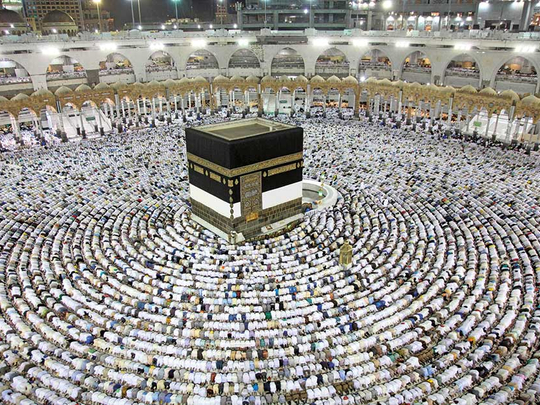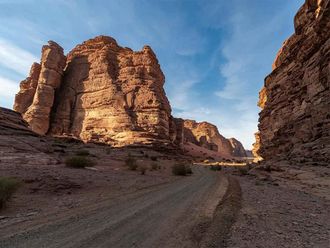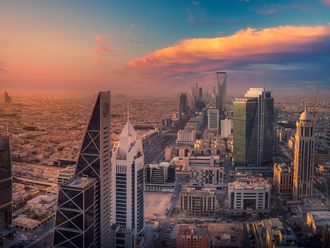
Abu Dhabi: Mecca is preparing to receive Haj pilgrims who have met health conditions approved by the relevant authorities and entered into a week-long isolation, Saudi media reported.
This year’s Haj will begin on July 29 and it has been scaled back dramatically to include only around 1,000 Muslim pilgrims as Saudi Arabia battles the pandemic, authorities said on Monday.
Residents will account for 70 per cent of the total number of pilgrims while Saudis mostly from the medical and military sectors will make up the rest.
Pilgrims will spend several days in a hotel from Saturday July 25 until Wednesday July 29 and after the end of the isolation period, they will go to Mecca.
Careful rituals
While they are in the hotel, they will be provided with all necessary health care and will then head to mount Arafat accompanied by medical teams on the 9th day of Dhu Al Hijjah (Thursday, July 30), for the most important part of the Haj.
The pilgrims will spend the whole day on the holy Jabal Al Rahma mountain, (known as the mountain of forgiveness), at Arafat outside Mecca to supplicate to Allah to forgive their sins and to pray for personal strength in the future, while maintaining social distancing as per COVID-19 health protocols.
During the Haj, male pilgrims wear simple, white terry cloth garments, while women forgo makeup and perfume and wear loose-fitting clothing and a head covering. This state of “ihram,” or spiritual purity, is intended for pilgrims to focus on the inner self over their outward appearance.
The white garments worn by men are forbidden to contain any stitching - a restriction meant to emphasize the equality of all Muslims and prevent wealthier pilgrims from differentiating themselves with more elaborate garments.
After spending the day in prayer on Mount Arafat, pilgrims will head toward an area called Muzdalifa, about nine kilometers west of Mount Arafat, according to specific routes and transportation regulations that are subject to health protocols.
In Muzdalifa, pilgrims will rest and pick up pebbles that will be used for a symbolic stoning of the devil and casting away of evil.
At these sites, three areas measuring 40 feet each will be equipped with all the health and safety measures in place to serve food and meals to pilgrims.
In Mina, an area about 20 kilometers east of Mecca, the Saudi Haj Ministry allocated a fully furnished and equipped tower to accommodate pilgrims during the final days of Haj, which coincide with Eid Al Adha, or the festival of sacrifice, celebrated by Muslims.
Checkpoints
To deter violators from entering the holy sites, Haj security forces will impose a comprehensive security cordon there with a fine of 10,000 riyals imposed on any offender, and it will be doubled if the violation is repeated.
Saudi Minister of Haj and Umrah, Dr Mohammed Saleh Benten, has inspected the facilities and arrangements made for the pilgrims in the holy sites in Mecca.
Speaking to the Saudi Press Agency after the tour, the minister said that the Saudi government has worked out unprecedented plans for the running of this year’s Haj, enabling pilgrims to perform their rituals in ease and comfort and safety.
“The comprehensive, foolproof plans will be carried out by the security, health and service agencies. The plans include the provision of the best health services, and the most appropriate crowd control, strictly in line with the COVID-19 health protocols, to ensure full safety of pilgrims,” Dr Benten said.
Meanwhile, Maj. Gen. Mohammed Bin Wasl Al Ahmadi, assistant commander of the Haj security forces for the Grand Mosque and its premises, said on Tuesday that the security plan for this year’s pilgrimage prioritises on organisational, security, humanitarian and health aspects.
He said the Haj security forces have installed entry and exit mechanisms from the Grand Mosque during Haj, with passages for pilgrims extending from the southern and western premises of venue as well as special passages around the circumambulation and Saey areas.












